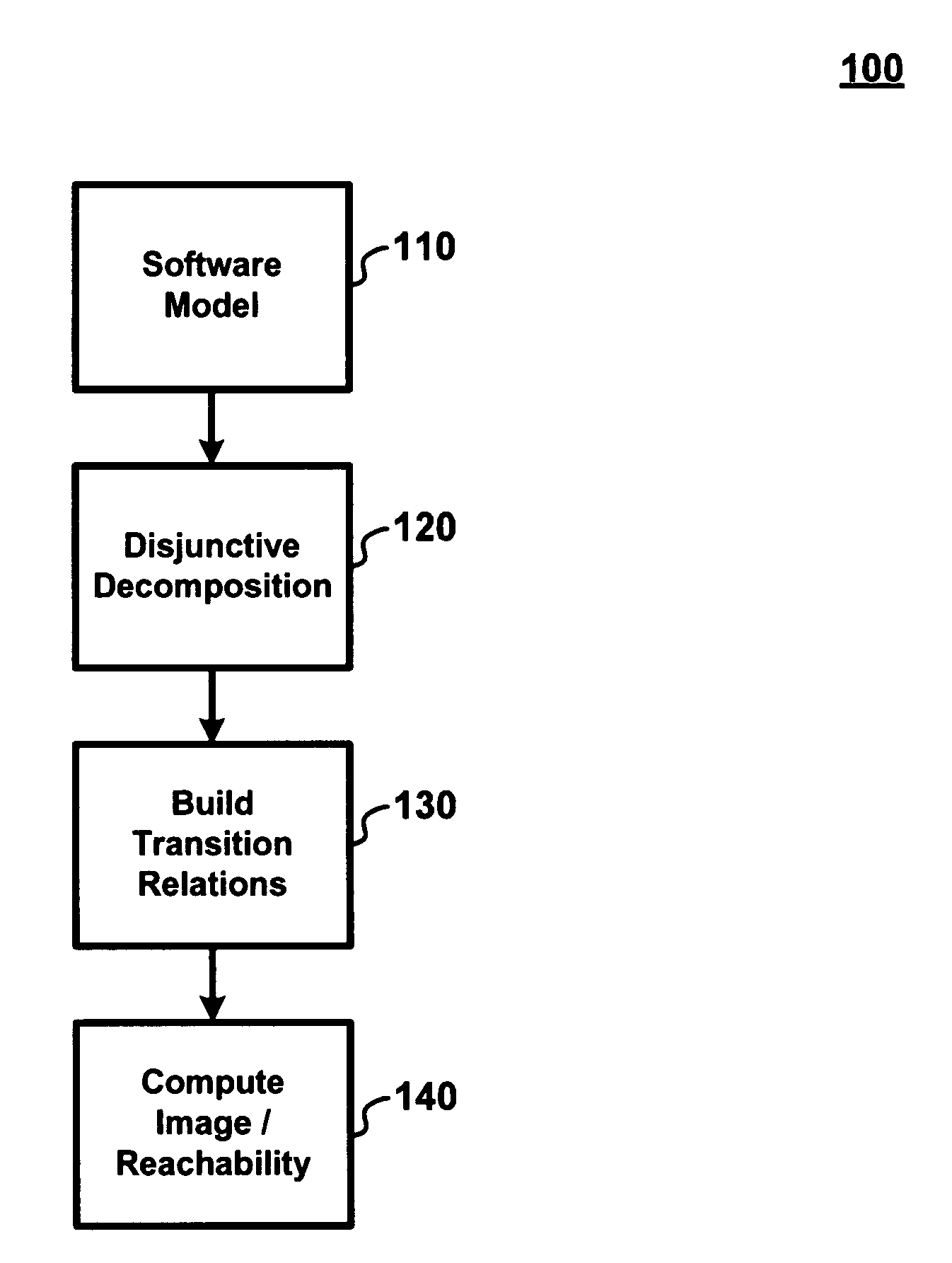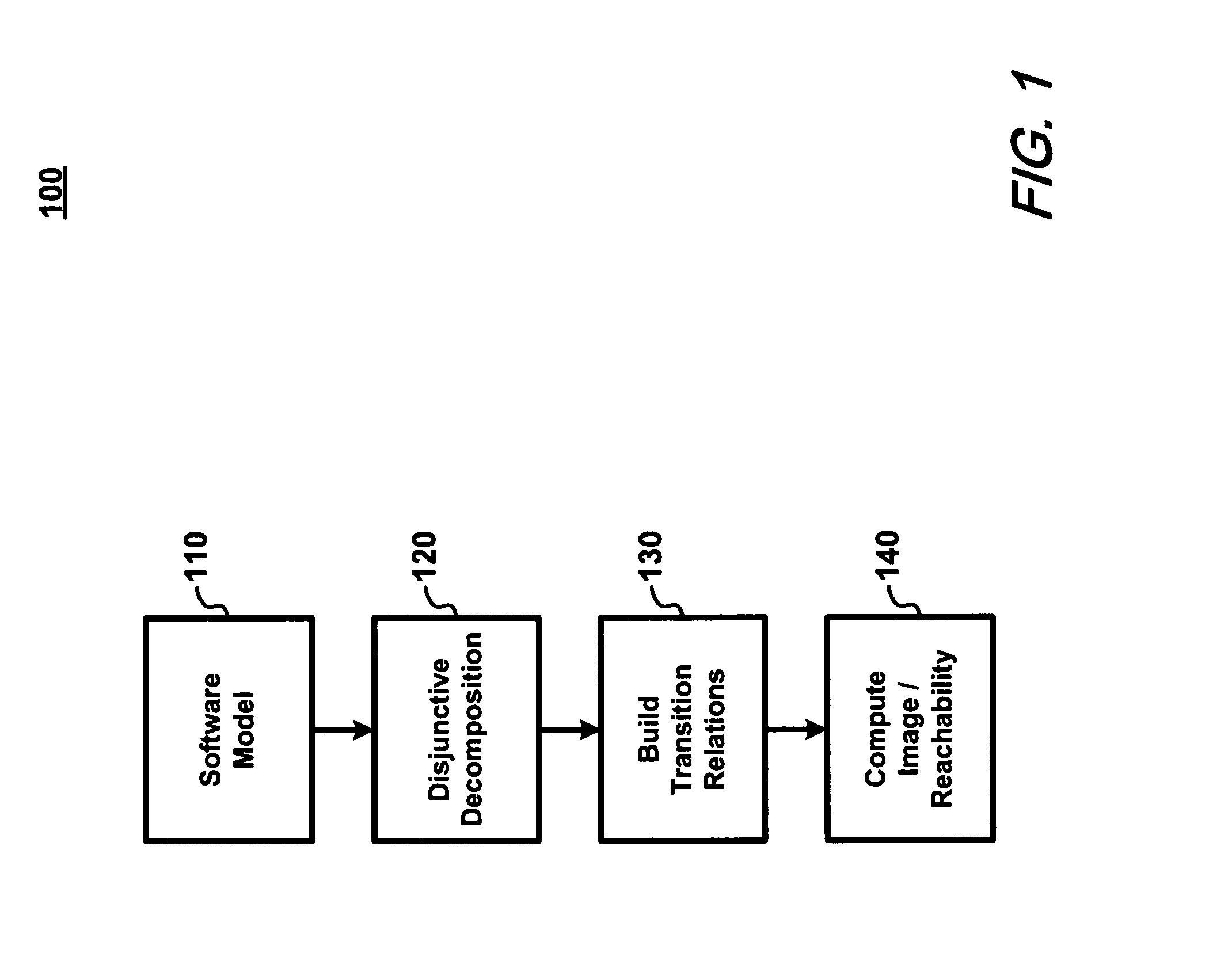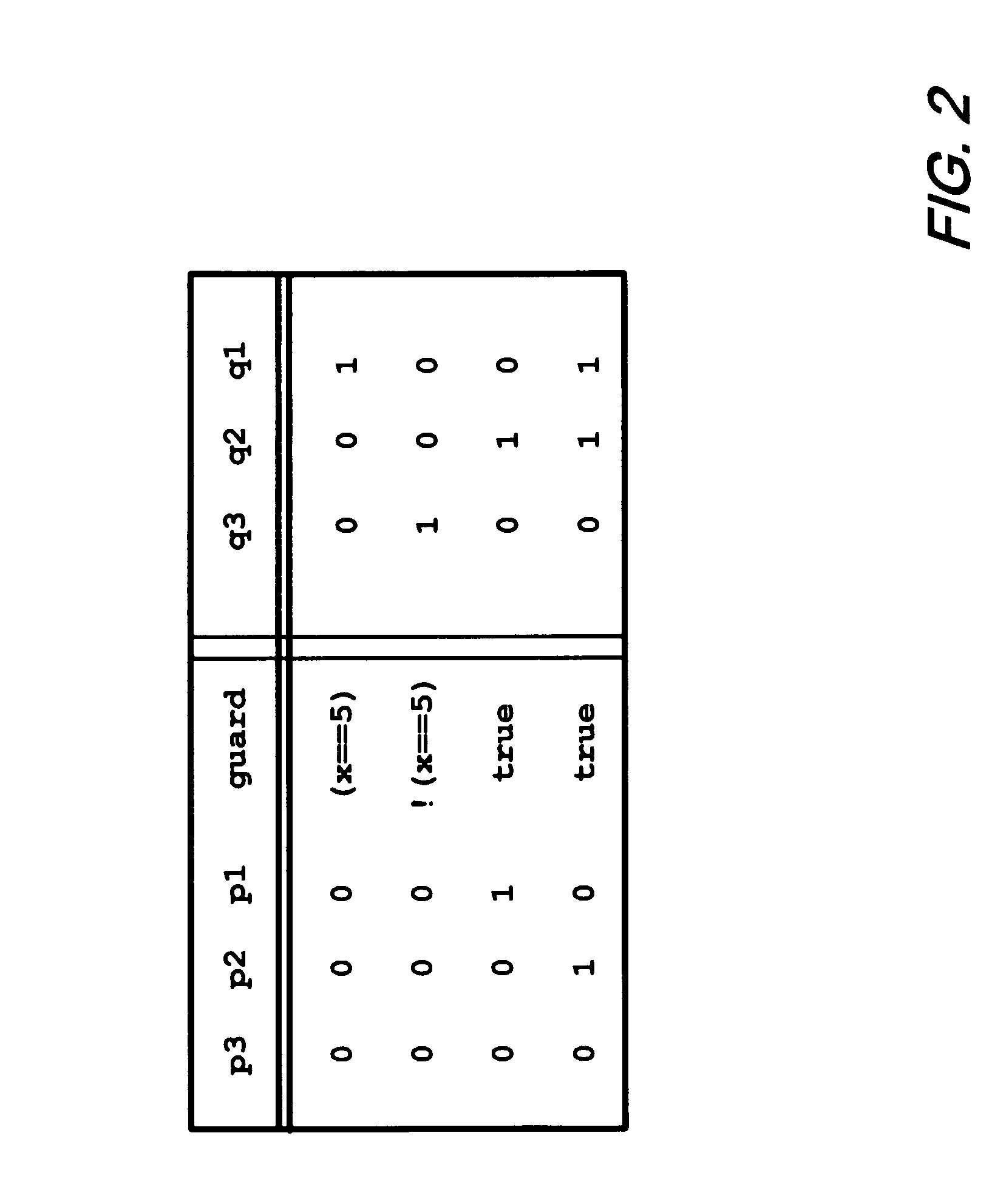Disjunctive image computation for sequential systems
a sequential system and image computation technology, applied in the field of disjunctive image computation for sequential systems, can solve the problems of significantly more difficult application of existing model checkers, too is subject to blow-up problems, and the complexity of model checking methods is dependent, so as to achieve significant performance improvement in image computation, the effect of drastically reducing the number of live variables in the transition relation of each submodul
- Summary
- Abstract
- Description
- Claims
- Application Information
AI Technical Summary
Benefits of technology
Problems solved by technology
Method used
Image
Examples
Embodiment Construction
[0032] In discussing our inventive method, it is noted that sequential software has some useful characteristics that hardware does not. First, program variables in software often exhibit a higher degree of locality. In particular, many are defined either as local variables or are effective only in part of the entire program. This locality information is relatively easy to retrieve because it is available in the source code. In addition, state transitions associated with software are sequential in nature; that is, at any point in the program, only a very limited number of state variables can change their values. Variables in hardware on the other hand, are updated simultaneously which means that their values can rarely be updated independently from one other. Advantageously, our inventive method exploits these characteristics of software.
[0033]FIG. 1 is a high-level flowchart depicting the steps associated with our inventive method. In particular, a software model 110 is disjunctive...
PUM
 Login to View More
Login to View More Abstract
Description
Claims
Application Information
 Login to View More
Login to View More - R&D
- Intellectual Property
- Life Sciences
- Materials
- Tech Scout
- Unparalleled Data Quality
- Higher Quality Content
- 60% Fewer Hallucinations
Browse by: Latest US Patents, China's latest patents, Technical Efficacy Thesaurus, Application Domain, Technology Topic, Popular Technical Reports.
© 2025 PatSnap. All rights reserved.Legal|Privacy policy|Modern Slavery Act Transparency Statement|Sitemap|About US| Contact US: help@patsnap.com



